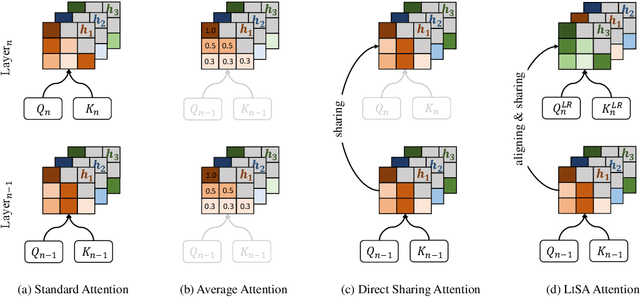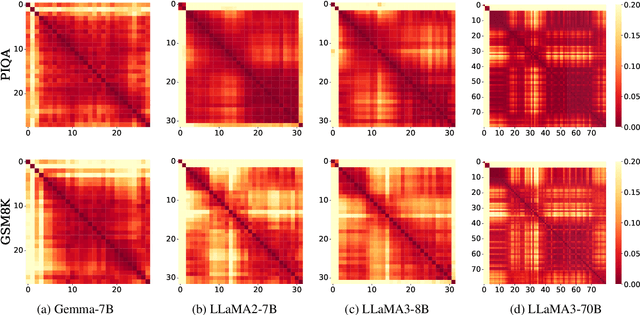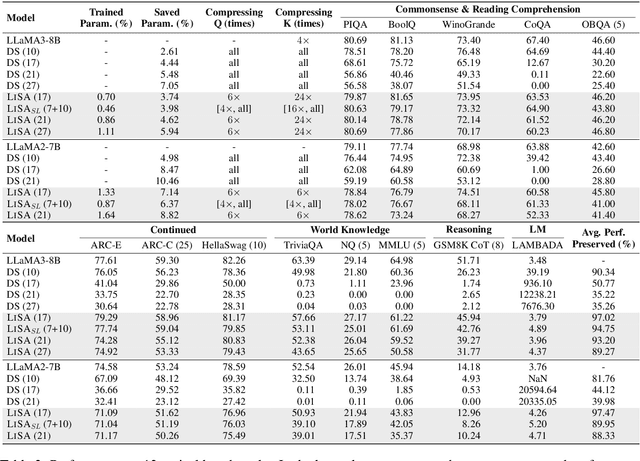Qiaozhi He
StickMotion: Generating 3D Human Motions by Drawing a Stickman
Mar 05, 2025Abstract:Text-to-motion generation, which translates textual descriptions into human motions, has been challenging in accurately capturing detailed user-imagined motions from simple text inputs. This paper introduces StickMotion, an efficient diffusion-based network designed for multi-condition scenarios, which generates desired motions based on traditional text and our proposed stickman conditions for global and local control of these motions, respectively. We address the challenges introduced by the user-friendly stickman from three perspectives: 1) Data generation. We develop an algorithm to generate hand-drawn stickmen automatically across different dataset formats. 2) Multi-condition fusion. We propose a multi-condition module that integrates into the diffusion process and obtains outputs of all possible condition combinations, reducing computational complexity and enhancing StickMotion's performance compared to conventional approaches with the self-attention module. 3) Dynamic supervision. We empower StickMotion to make minor adjustments to the stickman's position within the output sequences, generating more natural movements through our proposed dynamic supervision strategy. Through quantitative experiments and user studies, sketching stickmen saves users about 51.5% of their time generating motions consistent with their imagination. Our codes, demos, and relevant data will be released to facilitate further research and validation within the scientific community.
Boosting Text-To-Image Generation via Multilingual Prompting in Large Multimodal Models
Jan 13, 2025Abstract:Previous work on augmenting large multimodal models (LMMs) for text-to-image (T2I) generation has focused on enriching the input space of in-context learning (ICL). This includes providing a few demonstrations and optimizing image descriptions to be more detailed and logical. However, as demand for more complex and flexible image descriptions grows, enhancing comprehension of input text within the ICL paradigm remains a critical yet underexplored area. In this work, we extend this line of research by constructing parallel multilingual prompts aimed at harnessing the multilingual capabilities of LMMs. More specifically, we translate the input text into several languages and provide the models with both the original text and the translations. Experiments on two LMMs across 3 benchmarks show that our method, PMT2I, achieves superior performance in general, compositional, and fine-grained assessments, especially in human preference alignment. Additionally, with its advantage of generating more diverse images, PMT2I significantly outperforms baseline prompts when incorporated with reranking methods. Our code and parallel multilingual data can be found at https://github.com/takagi97/PMT2I.
LRHP: Learning Representations for Human Preferences via Preference Pairs
Oct 06, 2024



Abstract:To improve human-preference alignment training, current research has developed numerous preference datasets consisting of preference pairs labeled as "preferred" or "dispreferred". These preference pairs are typically used to encode human preferences into a single numerical value through reward modeling, which acts as a reward signal during reinforcement learning from human feedback (RLHF). However, representing these human preferences as a numerical value complicates the analysis of these preferences and restricts their broader applications other than RLHF. In contrast, in this work, we introduce a preference representation learning task that aims to construct a richer and more structured representation of human preferences. We further develop a more generalizable framework, Learning Representations for Human Preferences via preference pairs (namely LRHP), which extends beyond traditional reward modeling to tackle this task. We verify the utility of preference representations in two downstream tasks: preference data selection and preference margin prediction. Building upon the human preferences in representations, we achieve strong performance in both tasks, significantly outperforming baselines.
RoVRM: A Robust Visual Reward Model Optimized via Auxiliary Textual Preference Data
Aug 22, 2024



Abstract:Large vision-language models (LVLMs) often fail to align with human preferences, leading to issues like generating misleading content without proper visual context (also known as hallucination). A promising solution to this problem is using human-preference alignment techniques, such as best-of-n sampling and reinforcement learning. However, these techniques face the difficulty arising from the scarcity of visual preference data, which is required to train a visual reward model (VRM). In this work, we continue the line of research. We present a Robust Visual Reward Model (RoVRM) which improves human-preference alignment for LVLMs. RoVRM leverages auxiliary textual preference data through a three-phase progressive training and optimal transport-based preference data selection to effectively mitigate the scarcity of visual preference data. We experiment with RoVRM on the commonly used vision-language tasks based on the LLaVA-1.5-7B and -13B models. Experimental results demonstrate that RoVRM consistently outperforms traditional VRMs. Furthermore, our three-phase progressive training and preference data selection approaches can yield consistent performance gains over ranking-based alignment techniques, such as direct preference optimization.
Cross-layer Attention Sharing for Large Language Models
Aug 04, 2024



Abstract:As large language models (LLMs) evolve, the increase in model depth and parameter number leads to substantial redundancy. To enhance the efficiency of the attention mechanism, previous works primarily compress the KV cache or group attention heads, while largely overlooking redundancy between layers. Our comprehensive analyses across various LLMs show that highly similar attention patterns persist within most layers. It's intuitive to save the computation by sharing attention weights across layers. However, further analysis reveals two challenges: (1) Directly sharing the weight matrix without carefully rearranging the attention heads proves to be ineffective; (2) Shallow layers are vulnerable to small deviations in attention weights. Driven by these insights, we introduce LiSA, a lightweight substitute for self-attention in well-trained LLMs. LiSA employs tiny feed-forward networks to align attention heads between adjacent layers and low-rank matrices to approximate differences in layer-wise attention weights. Evaluations encompassing 13 typical benchmarks demonstrate that LiSA maintains high response quality in terms of accuracy and perplexity while reducing redundant attention calculations within 53-84% of the total layers. Our implementations of LiSA achieve a 6X compression of Q and K, with maximum throughput improvements of 19.5% for LLaMA3-8B and 32.3% for LLaMA2-7B.
ChuXin: 1.6B Technical Report
May 08, 2024Abstract:In this report, we present ChuXin, an entirely open-source language model with a size of 1.6 billion parameters. Unlike the majority of works that only open-sourced the model weights and architecture, we have made everything needed to train a model available, including the training data, the training process, and the evaluation code. Our goal is to empower and strengthen the open research community, fostering transparency and enabling a new wave of innovation in the field of language modeling. Furthermore, we extend the context length to 1M tokens through lightweight continual pretraining and demonstrate strong needle-in-a-haystack retrieval performance. The weights for both models are available at Hugging Face to download and use.
Efficient LLM Inference with Kcache
Apr 28, 2024Abstract:Large Language Models(LLMs) have had a profound impact on AI applications, particularly in the domains of long-text comprehension and generation. KV Cache technology is one of the most widely used techniques in the industry. It ensures efficient sequence generation by caching previously computed KV states. However, it also introduces significant memory overhead. We discovered that KV Cache is not necessary and proposed a novel KCache technique to alleviate the memory bottleneck issue during the LLMs inference process. KCache can be used directly for inference without any training process, Our evaluations show that KCache improves the throughput of popular LLMs by 40% with the baseline, while keeping accuracy.
Code Comparison Tuning for Code Large Language Models
Mar 28, 2024Abstract:We present Code Comparison Tuning (CCT), a simple and effective tuning method for code large language models (Code LLMs) to better handle subtle code errors. Specifically, we integrate the concept of comparison into instruction tuning, both at the token and sequence levels, enabling the model to discern even the slightest deviations in code. To compare the original code with an erroneous version containing manually added code errors, we use token-level preference loss for detailed token-level comparisons. Additionally, we combine code segments to create a new instruction tuning sample for sequence-level comparisons, enhancing the model's bug-fixing capability. Experimental results on the HumanEvalFix benchmark show that CCT surpasses instruction tuning in pass@1 scores by up to 4 points across diverse code LLMs, and extensive analysis demonstrates the effectiveness of our method.
RecycleGPT: An Autoregressive Language Model with Recyclable Module
Aug 08, 2023Abstract:Existing large language models have to run K times to generate a sequence of K tokens. In this paper, we present RecycleGPT, a generative language model with fast decoding speed by recycling pre-generated model states without running the whole model in multiple steps. Our approach relies on the observation that adjacent tokens in a sequence usually have strong correlations and the next token in a sequence can be reasonably guessed or inferred based on the preceding ones. Experiments and analysis demonstrate the effectiveness of our approach in lowering inference latency, achieving up to 1.4x speedup while preserving high performance.
 Add to Chrome
Add to Chrome Add to Firefox
Add to Firefox Add to Edge
Add to Edge